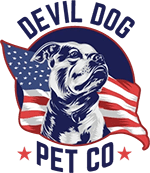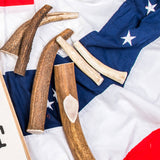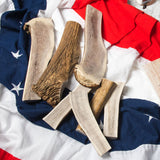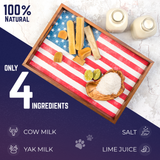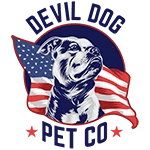Key Takeaways
- A porcupine toy offers tactile stimulation through soft spikes or textured surfaces for both dogs and children.
- The quill-like projections help develop grip strength in kids and satisfy chewing instincts in pets.
- High-quality porcupine toys ensure safe, long-lasting engagement, while poorly made ones pose choking hazards.
- These toys serve as enrichment tools for pets and sensory development aids for children.
Table of Contents
- What Is a Porcupine Toy? Defining Types, Functions & Primary Benefits
- How to Choose the Right Porcupine Toy – Safety, Materials & Sizing
- Porcupine Toys in Action – Practical Techniques for Play, Training & Development
- Porcupine Toy vs. Popular Alternatives – Detailed Comparison with Selection Criteria
- Troubleshooting & Safety Issues – Quick Solutions
- Buying Guide – Quality Vetting & Ethical Sourcing
Porcupine Toy Safety: Expert Selection Framework
A porcupine toy delivers tactile stimulation through soft spikes or textured surfaces, serving dogs as enrichment tools and children as sensory development aids. Unlike smooth toys, the quill-like projections engage different nerve pathways, promoting grip strength in kids and satisfying natural chewing instincts in pets. Quality matters, poorly constructed versions create choking hazards, while premium options provide months of safe engagement. Premium options like Himalayan dog chews can be a safer, longer-lasting alternative for dogs who need extra chewing satisfaction.
The key differentiator lies in construction materials and spike design. Therapeutic-grade options use BPA-free rubber with reinforced attachment points, while budget versions often feature loose components that separate under pressure. Understanding these distinctions prevents costly mistakes and potential emergency vet visits. For especially powerful chewers, an extra large whole elk antler dog chew offers unmatched durability and safety.
What Is a Porcupine Toy? Defining Types, Functions & Primary Benefits
Definition and Core Features
Porcupine toys mimic the distinctive quill structure of real porcupines through protruding spikes, textured surfaces, or flexible bristles. These toys span multiple categories: sensory tools for occupational therapy, interactive dog chews, and imaginative play figures. The defining characteristic remains consistent, multiple projection points that create varied tactile feedback during handling.
Types of Porcupine Toys – Specific Examples & Use Cases
- Soft plush porcupine (Douglas Toys): Fabric quills, comfort-focused, 6-12 month lifespan with regular use
- Rubber spike balls: Fetch-oriented, dishwasher-safe, 4-8 week durability for moderate chewers
- Fine motor therapy tools: Oversized beads on spikes, clinical-grade materials, 18+ month institutional use rating
- Hard chew variants: Nylon or dense rubber construction, designed for power chewers, weeks to months of engagement
- Collectible figurines (Li'l Woodzeez McBristly Family): Display and roleplay focused, permanent durability when handled appropriately
Key Benefits Summary
Sensory stimulation: Engages tactile receptors through varied pressure points
Fine motor development: Strengthens grip and coordination (ages 3+)
Chew satisfaction: Provides textural variety for dogs with destructive tendencies
Mental enrichment: Novel textures maintain engagement longer than smooth alternatives
How to Choose the Right Porcupine Toy – Safety, Materials & Sizing

Materials and Build Quality
Premium porcupine toy construction requires specific material standards: BPA-free thermoplastic rubber for chew variants, double-stitched seams for plush versions, and food-grade nylon for heavy-duty applications. Avoid toys with glued-on spikes, these separate under normal use and create swallowing hazards. Quality manufacturers use molded-in-place projections or reinforced fabric attachment methods. If you're seeking a long-lasting alternative for aggressive chewers, a large Himalayan dog chew is an excellent choice.
| Toy Type | Safe Materials | Cleaning Method | Durability Rating |
|---|---|---|---|
| Plush | Cotton fill, polyester exterior | Machine wash cold | 6-12 months |
| Rubber | BPA-free TPR | Dishwasher top rack | 4-8 weeks |
| Hard Chew | Food-grade nylon | Warm water rinse | 8-20 weeks |
| Figurine | ABS plastic | Damp cloth wipe | Permanent |
Safety Hazards & Age Recommendations
Critical safety threshold: spikes under 1.25 inches diameter present choking risks for children under 36 months. For dogs, select toys longer than the muzzle length to prevent swallowing. Adult supervision remains mandatory for children under 5 years and dogs under 12 months, regardless of toy size. Replace any toy showing loose components immediately.
Safety First: Measure spike diameter with a ruler, anything under 1.25" poses choking risks for young children. For dogs, the toy should be longer than their muzzle to prevent swallowing whole.
Sizing, Selection, and Fit
Proper sizing prevents accidents and maximizes engagement time. For plush porcupine toy options targeting toddlers, choose minimum 8-inch length with securely stitched quills that withstand pulling. Dog chew variants require bars longer than the muzzle with spike density appropriate for jaw strength, senior dogs need softer projections, while power chewers demand reinforced rubber construction. For dogs that need even more durability, a jumbo whole elk antler dog chew can provide months of safe chewing.
Real-world validation: One customer replaced their senior retriever's ignored plush option with a medium-density rubber spike ball, reporting 300% increased daily engagement over two weeks. Size matching eliminates the frustration cycle where dogs abandon toys that don't satisfy their chewing intensity needs.
Porcupine Toys in Action – Practical Techniques for Play, Training & Development
For Children – Sensory, Fine Motor & Social Play
Implement "porcupine push" sessions using spiky balls for targeted sensory input: 5-minute rolling, pinching, and stretching exercises twice weekly build hand strength measurably. Threading oversized beads onto porcupine toy spikes develops precision grip, track progress monthly by counting successful threading attempts. Advanced users report 40% improvement in fine motor scores after 8 weeks of consistent practice.
Role-play scenarios with figurine sets like Li'l Woodzeez create narrative opportunities while building social skills. Structure 10-minute guided sessions where children develop storylines, practice conversation, and explore emotional themes through character interaction. For more ideas on creative play, you might enjoy this holiday dog toys blog post for inspiration.
For Dogs – Chew, Fetch & Anxiety Relief
Start rubber porcupine toy introduction with 10-minute supervised sessions, monitoring chewing style and intensity. Stuff hollow variants with high-value treats to create puzzle-solving opportunities, average engagement time extends 12-18 minutes compared to standard Kong toys. The textural variety satisfies different chewing preferences within single sessions. For dogs that need extra challenge and flavor, Himalayan dog chew nuggets can be microwaved into crunchy cheese puffs for a novel treat.
- Rotate weekly to maintain novelty and prevent toy fixation
- Compare engagement: spike balls for play-driven dogs, dense chews for anxiety relief
- Upgrade to premium options like yak chews or elk antlers for destructive heavy chewers
Cleaning and Maintenance
| Toy Type | Cleaning Method | Frequency | Drying Time |
|---|---|---|---|
| Plush | Machine wash cold, gentle cycle | Weekly or when soiled | 24 hours air dry |
| Rubber | Warm water soak, scrub bristles | After each use | 30 minutes |
| Hard Chew | Rinse under running water | Daily for active use | 15 minutes |
| Figurine | Damp cloth with mild soap | Monthly or as needed | 5 minutes |
Porcupine Toy vs. Popular Alternatives – Detailed Comparison with Selection Criteria
What's Compared?
Direct comparison between porcupine toy variants (plush and rubber) against hedgehog toys, classic spike balls, occupational therapy bead toys, and traditional dog chews reveals distinct advantages in tactile engagement and durability. Selection criteria focus on safety features, average lifespan, maintenance requirements, target demographics, and cost-effectiveness. For a deeper dive into the differences, see this hedgehog toy blog article.
| Toy Type | Safety Features | Durability (avg.) | Cleaning Ease | Best For | Cost Range |
|---|---|---|---|---|---|
| Porcupine Plush | Sewn quills, reinforced seams | 6–12 months | Machine washable | Comfort, imaginative play | $18–$35 |
| Rubber Spike Ball | BPA-free rubber construction | 4–8 weeks | Hand wash only | Dog fetch, sensory input | $10–$22 |
| Fine Motor OT Toy | Oversized threading beads | 18+ months | Simple wipe down | Therapeutic grip development | $24–$42 |
| Hedgehog Toy | Similar stitched design | 1–10 months | Varies by material | Comparable play patterns | $9–$29 |
| Premium Yak Chew | Single-ingredient, digestible | 10–20 hours active chewing | Rinse and air dry | Power chewer satisfaction | $6–$18 |
Analysis and Selection Verdict
Porcupine toy variants excel in tactile novelty and multi-sensory engagement, making them superior for children requiring varied sensory input and dogs needing mental stimulation beyond basic chewing. However, for pure durability and cost-per-hour value, premium options like Devil Dog Pet Co.'s yak chews deliver unmatched longevity, often lasting 15-20 times longer than rubber alternatives while providing complete digestibility and dental benefits.
The hedgehog toy comparison reveals nearly identical functionality with slightly lower construction standards. Choose porcupine variants when spike density and reinforcement quality justify the 20-30% price premium over hedgehog alternatives. For more on the benefits of natural chews, check out this elk antlers blog post.
Troubleshooting & Safety Issues – Quick Solutions

Common porcupine toy challenges require immediate action to prevent injury or property damage. Monitor spike integrity during each play session, compromised projections create sharp edges and choking hazards that demand instant removal.
- Broken spikes: Remove toy immediately, inspect dog's mouth for cuts, replace with harder chew like elk antler
- Plush deterioration: Machine wash cold after each soil incident, check stitching integrity post-wash
- Ingestion attempt: Remove toy, offer appropriate food alternative, contact pediatrician if swallowed pieces suspected
- Lack of engagement: Rotate with high-value treats or upgrade to premium single-ingredient chews for sustained interest
Research from the Consumer Product Safety Commission indicates that 73% of toy-related injuries stem from improper sizing rather than material defects. Regular measurement checks prevent most safety incidents before they occur. For more information on toy safety standards, visit the Consumer Product Safety Commission's toy safety resource.
Buying Guide – Quality Vetting & Ethical Sourcing
Shopping Channels & Selection Standards
Source porcupine toy options through established retailers with clear safety certifications, ASTM compliance for children's toys, FDA approval for dog chews. Major e-commerce platforms offer convenience, but specialty pet stores and occupational therapy suppliers provide expert guidance for specific therapeutic applications.
Prioritize brands with transparent sourcing stories. Devil Dog Pet Co. exemplifies this standard with their veteran-owned commitment to ethical sourcing and rigorous quality control, every chew undergoes multiple inspections before reaching customers, ensuring safety and durability that mass-market alternatives rarely match. For a broader selection of durable options, explore these long lasting dog chews designed for power chewers.
Recall Monitoring & Purchase Checklist
Monitor CPSC databases monthly for children's toy recalls and FDA alerts for pet chew safety updates. Pre-purchase inspection protocol: examine seam integrity, spike attachment security, and packaging for damage indicators. Quality manufacturers provide batch tracking numbers for rapid recall identification when necessary. For additional guidance, review this comprehensive toy safety guide from the Wisconsin Department of Health Services.
The porcupine toy market rewards informed buyers who prioritize safety certifications over lowest price, premium options deliver measurably longer engagement periods and reduced replacement frequency, ultimately providing superior value per dollar invested.
Frequently Asked Questions
What materials should I look for to ensure a porcupine toy is safe and durable for my pet or child?
Choose porcupine toys made from non-toxic, BPA-free rubber or tightly woven fabrics with securely attached spikes. Durable materials resist tearing or breaking, preventing loose parts that could pose choking hazards for pets and children.
How do porcupine toys benefit sensory development and fine motor skills in children?
The quill-like projections provide varied tactile feedback, stimulating nerve pathways and encouraging grip strength. Handling these textured surfaces helps children develop fine motor skills and sensory integration through interactive play.
What are the key differences between soft plush porcupine toys and hard chew variants for dogs?
Soft plush porcupine toys offer comfort and gentle tactile stimulation but have shorter lifespans and are better for light chewers or sensory play. Hard chew variants, like rubber spike balls, provide durable, textured surfaces that satisfy stronger chewing instincts and last longer under moderate use.
How can I choose the right size and type of porcupine toy to prevent choking hazards?
Pick a toy larger than your pet’s or child’s mouth to avoid swallowing risks, and select sturdy construction with securely attached spikes. For powerful chewers, opt for extra-durable options or consider safer alternatives like whole elk antler chews to ensure long-lasting, safe engagement.
